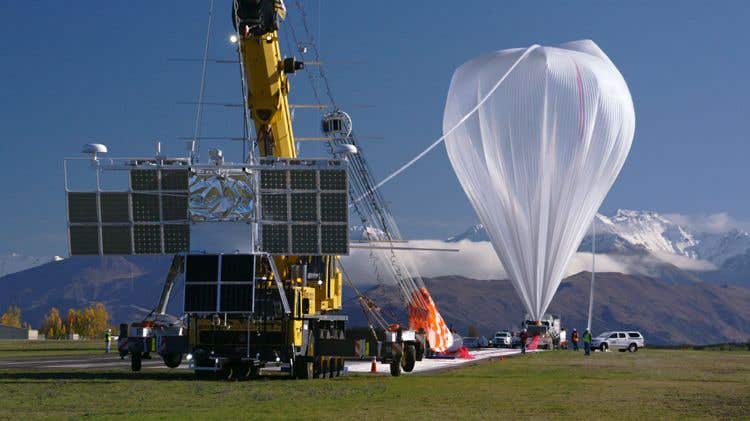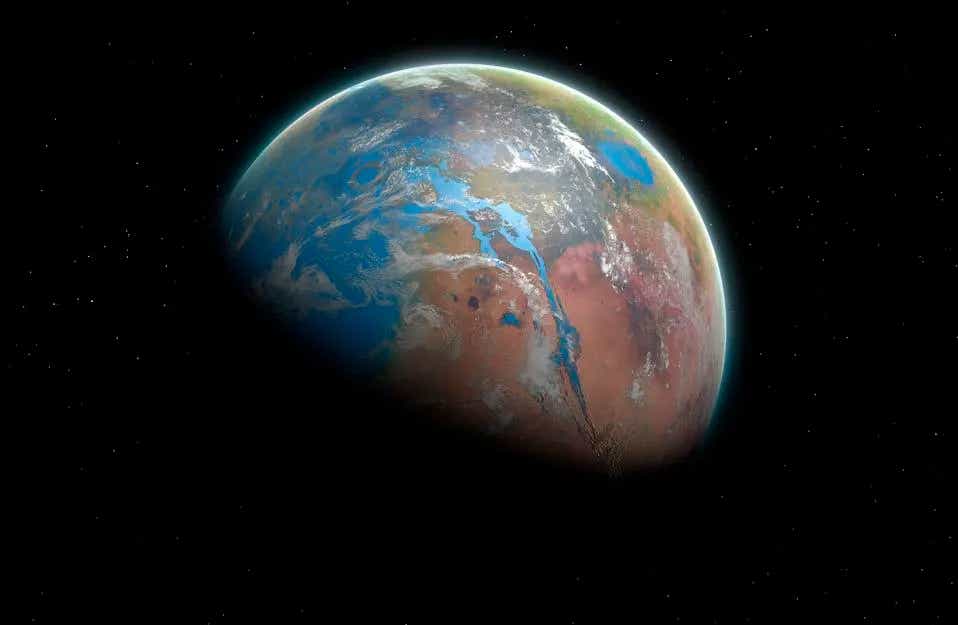Science and student payloads to fly aboard NASA’s next scientific balloons mission
NASA’s Scientific Balloon Program’s 2021 fall campaign is now underway in New Mexico, launching the first three of eight missions in August

[Sept 6, 2021: NASA's Goddard Space Flight Center]
NASA's Scientific Balloon Program's 2021 fall campaign is now underway in Fort Sumner, New Mexico, launching the first three of eight missions in August.
The missions planned for this campaign include an annual student experiment, three missions from NASA's Jet Propulsion Laboratory (JPL), and technology demonstrations for NASA's Columbia Scientific Balloon Facility.
The campaign window opened in mid-August and will run through mid-October.
"After a successful spring campaign, we hope to continue that success into our fall campaign," said Debbie Fairbrother, Scientific Balloon Program Office chief at NASA's Wallops Flight Facility in Virginia. "These flights continue to not only be important to our university and NASA partners, but to the next generation who get a hands-on experience building and flying their experiments aboard a real science platform."
Crews take the payload for one of the scientific balloon missions to be attached to the balloon before flight. (CREDIT: NASA Wallops Flight Facility)
Here are a few highlights for the fall 2021 campaign:
HASP
The 15th annual High-Altitude Student Platform mission, or HASP, will launch 11 scientific student payloads. The student teams come from across the United States and experience the full life cycle of balloon experiment.
Along with the HASP student mission payloads, the Colorado Space Grant Consortium in Boulder will hitch a ride carrying 34 student payloads from the RockOn! workshop.
HASP is a joint project between NASA's Wallops Flight Facility Balloon Program Office, NASA's Science Mission Directorate, the Louisiana Space Consortium (LaSPACE) in Baton Rouge, and the Columbia Scientific Balloon Facility in Palestine, Texas.
PICTURE-C
The second flight of the PICTURE-C (Planetary Imaging Concept Testbed Using a Recoverable Experiment-Coronagraph) mission from University of Massachusetts Lowell aims to image exoplanetary dust and debris around stars. This mission will fly on the Wallops Arc Second Pointer, or WASP, a gondola designed to support pointing telescopes at specific astronomical objects of interest. The first flight flew 20 hours and observed nine astronomical objects while in flight.
JPL Missions: WHATSUP and SLS
Two missions, the Water Hunting Advanced Terahertz Spectrometer on an Ultra Small Platform (WHATSUP) and Submillimeterwave Limb Sounder (SLS), kicked off the fall balloon campaign on Aug. 20.
The WHATSUP mission will study the origins of water in Earth's atmosphere, and more broadly, in our solar system. The mission launched Aug. 20 and received good science data. JPL's SLS launched Aug. 30 and measured gases in the Earth's upper atmosphere. This mission has flown on past high-altitude balloon and also on the NASA ER-2 aircraft.
To follow along with the missions in the 2021 Fort Sumner fall campaign, visit NASA's Columbia Scientific Balloon Facility's website for real-time updates of a balloon's altitude and GPS location during flight.
Each mission will fly on a NASA zero-pressure scientific balloon, some of which can be as large as a football stadium when fully inflated. These balloons have open ducts hanging from the sides to allow gas to escape, and to prevent the pressure inside the balloon from building up during gas expansion as the balloon rises above Earth's surface. The duration of this type of balloon is limited because of gas loss, mostly due to the day/night cycling of the balloon.
NASA's scientific balloons offer low-cost, near-space access for suspended payloads weighing up to 8,000 pounds to conduct technology demonstration tests as well as scientific investigations in fields such as astrophysics, heliophysics, and atmospheric research. Depending on the goals and objectives of a specific mission, balloon flight durations can run hours to multiple days or weeks for longer-term tests and data collection.
NASA's Wallops Flight Facility manages the agency's Scientific Balloon Program with 10 to 15 flights on average each year from launch sites worldwide. Peraton, which operates NASA's Columbia Scientific Balloon Facility (CSBF) in Palestine, Texas, provides mission planning, engineering services, and field operations for NASA's scientific balloon program. In its 35 years of operation, CSBF has launched more than 1,700 scientific balloons. Raven Aerostar provides fabrication of NASA's stratospheric balloons.
Like these kind of feel good stories? Get the Brighter Side of News' newsletter.
Tags: #New_Discoveries, #Space, #Science, #Research, #Balloon, #NASA, #The_Brighter_Side_of_News
Joseph Shavit
Head Science News Writer | Communicating Innovation & Discovery
Based in Los Angeles, Joseph Shavit is an accomplished science journalist, head science news writer and co-founder at The Brighter Side of News, where he translates cutting-edge discoveries into compelling stories for a broad audience. With a strong background spanning science, business, product management, media leadership, and entrepreneurship, Joseph brings a unique perspective to science communication. His expertise allows him to uncover the intersection of technological advancements and market potential, shedding light on how groundbreaking research evolves into transformative products and industries.



